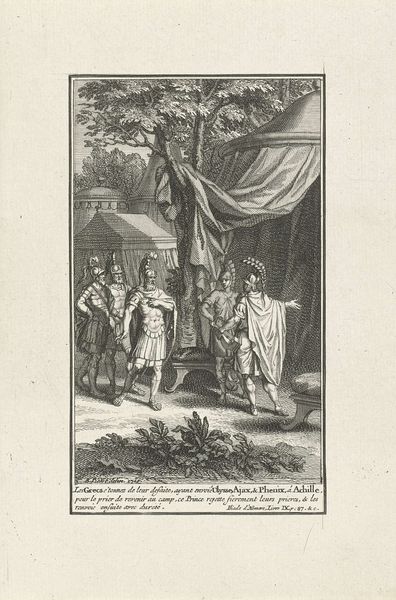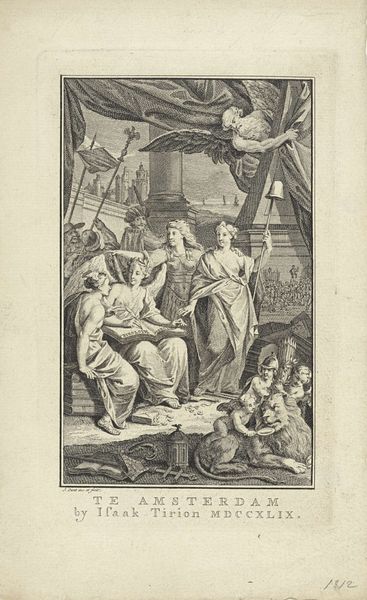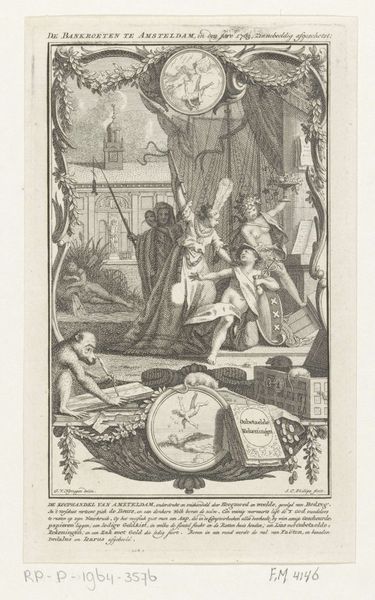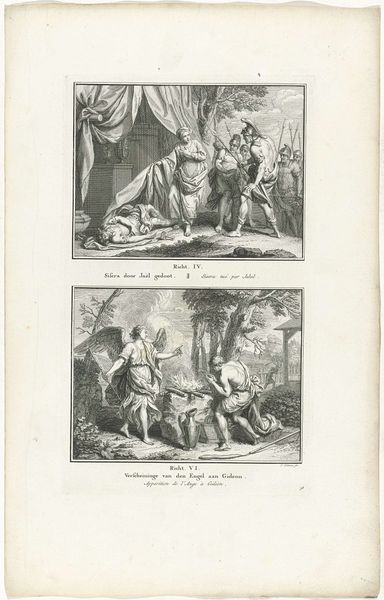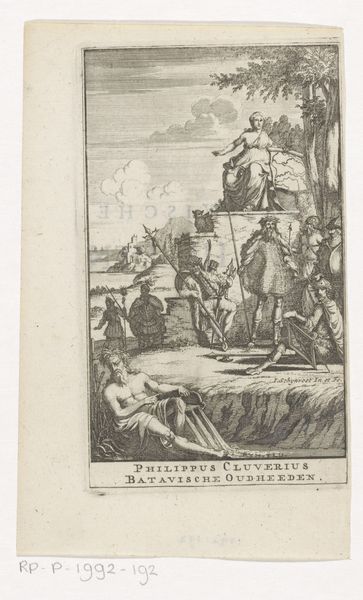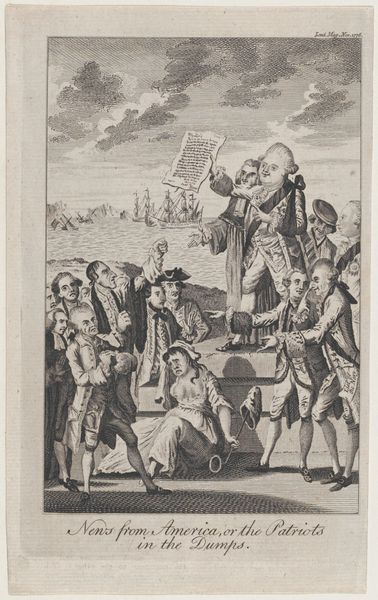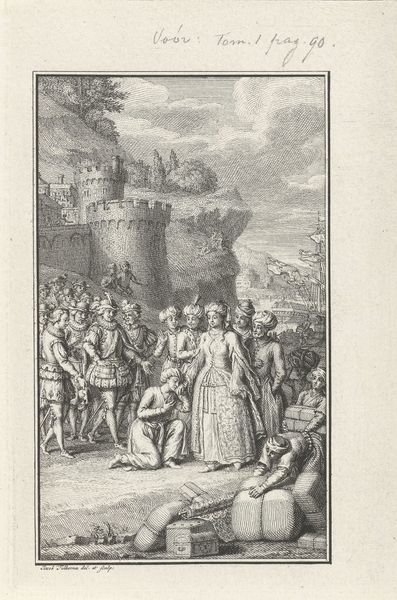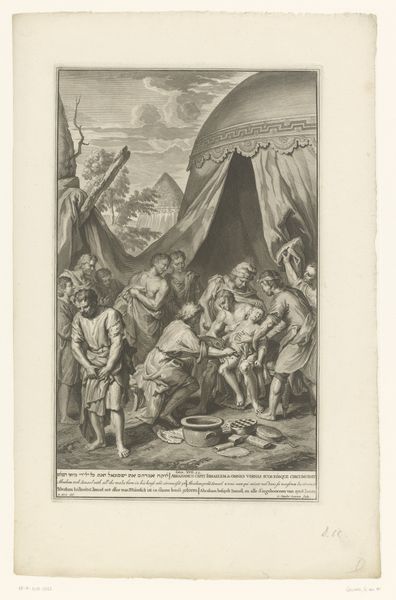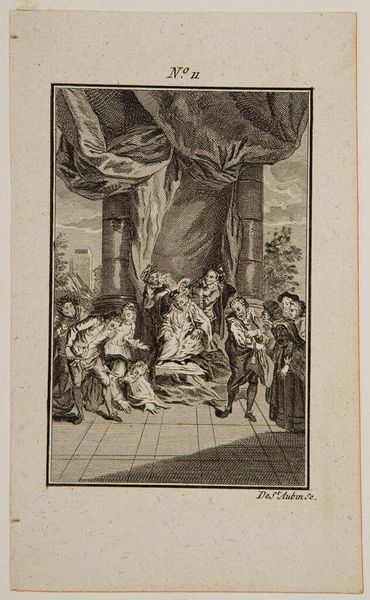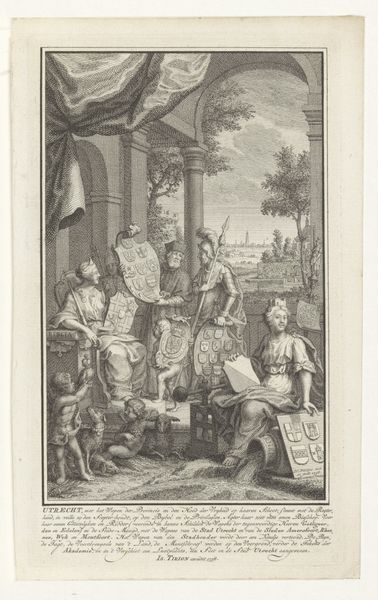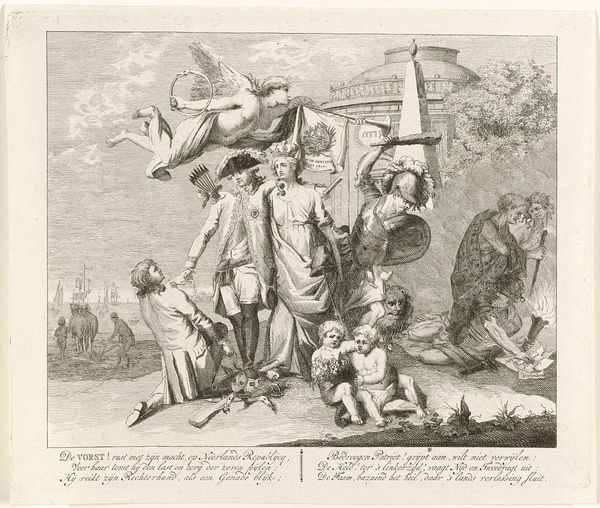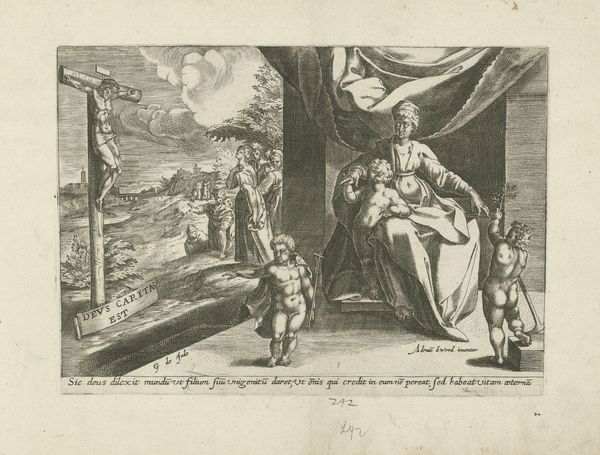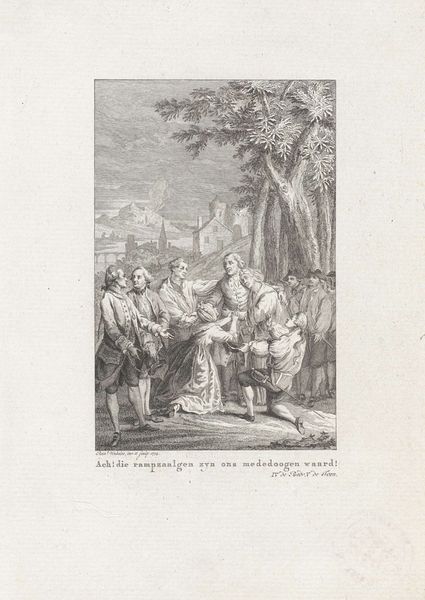
print, engraving
#
narrative-art
#
baroque
# print
#
figuration
#
genre-painting
#
history-painting
#
engraving
Dimensions: width 220 mm, height 355 mm
Copyright: Rijks Museum: Open Domain
Editor: This engraving from 1728 by Gilliam van der Gouwen, titled "Esau verkoopt zijn eerstgeboorterecht aan Jakob" at the Rijksmuseum depicts Esau selling his birthright to Jacob. The figures seem posed, almost staged. What socio-political undercurrents were at play in its reception and production? Curator: Precisely. This print allows us to consider how biblical narratives were being utilized and interpreted within the Dutch Republic. While seemingly just illustrating a religious tale, it's participating in a broader cultural discourse about inheritance, legitimacy, and perhaps even veiled critiques of societal power structures. Editor: That’s interesting. Can you elaborate on that? Curator: Consider the visual rhetoric here. Why present Esau as seemingly unburdened by the transaction? And Jacob offering him the lentils – what message does that communicate to its contemporary audience beyond the biblical one? Editor: It makes Jacob seem less cunning, more transactional maybe. So you're suggesting it's not just about religion, but about the burgeoning merchant class? Curator: Exactly. It is a story that can be recast, using Jacob as the careful accumulator versus the carefree but doomed Esau. These types of prints were often circulated among various social classes, so one wonders how they functioned as moralizing tools or subtle commentaries on social mobility at that time. The museum where this engraving is exhibited impacts our understanding. The Rijksmuseum is perceived very differently by distinct populations; as such it has various functions beyond pure art presentation. Editor: That reframing is so helpful. Now I see how this isn't just an illustration, but a reflection of anxieties about societal shifts! Curator: Indeed, understanding these historical layers illuminates the politics of imagery within the broader cultural landscape. Museums help with that but their work needs constant updating.
Comments
No comments
Be the first to comment and join the conversation on the ultimate creative platform.
